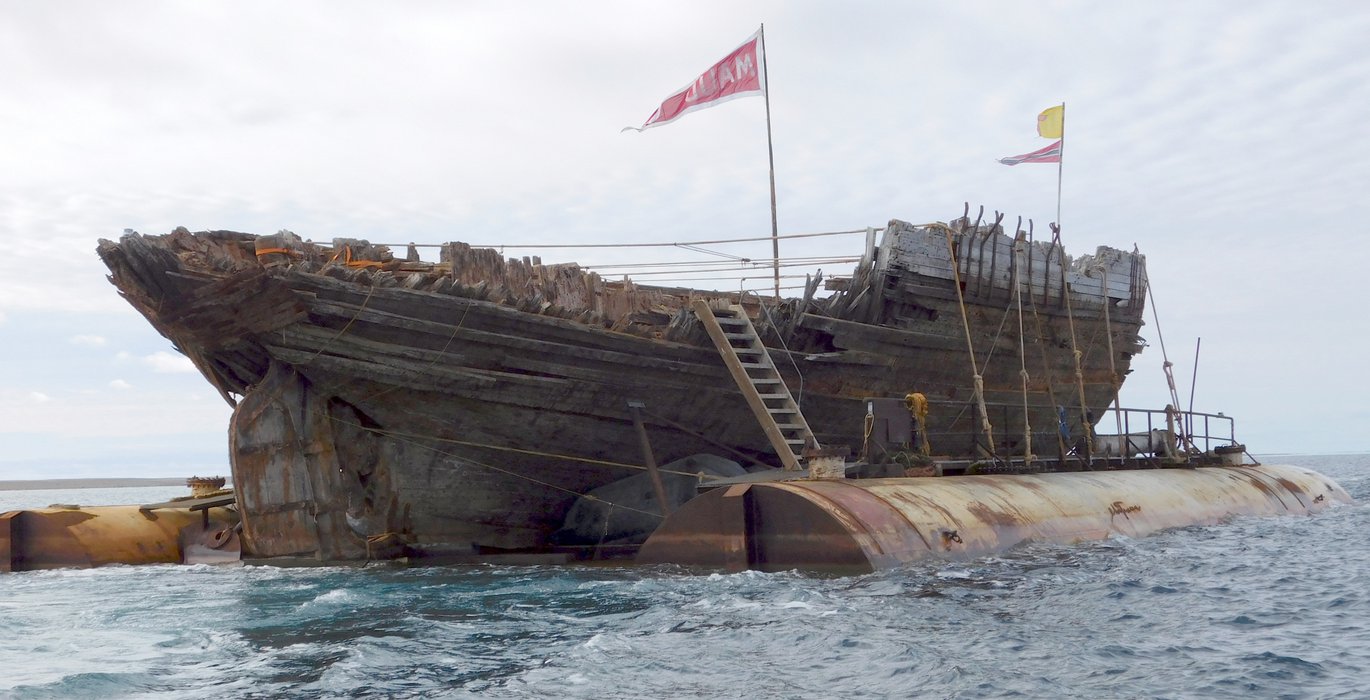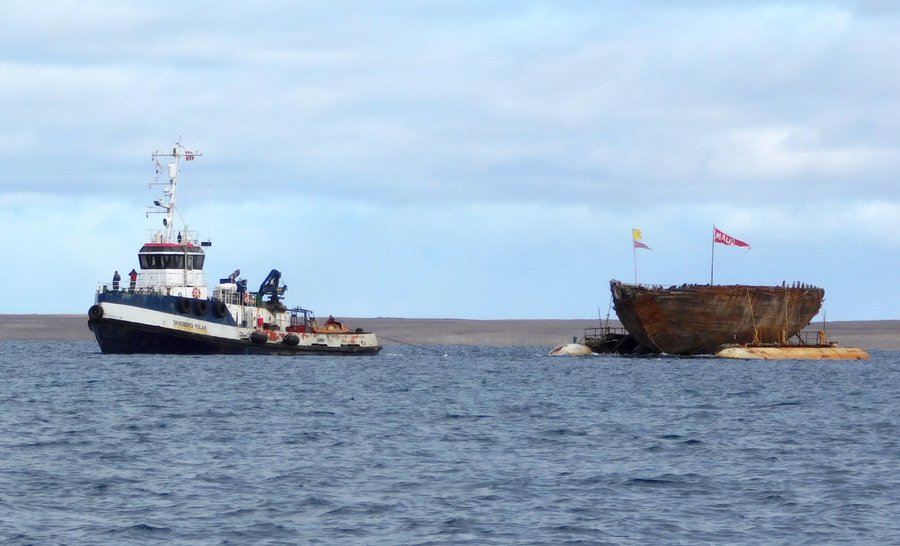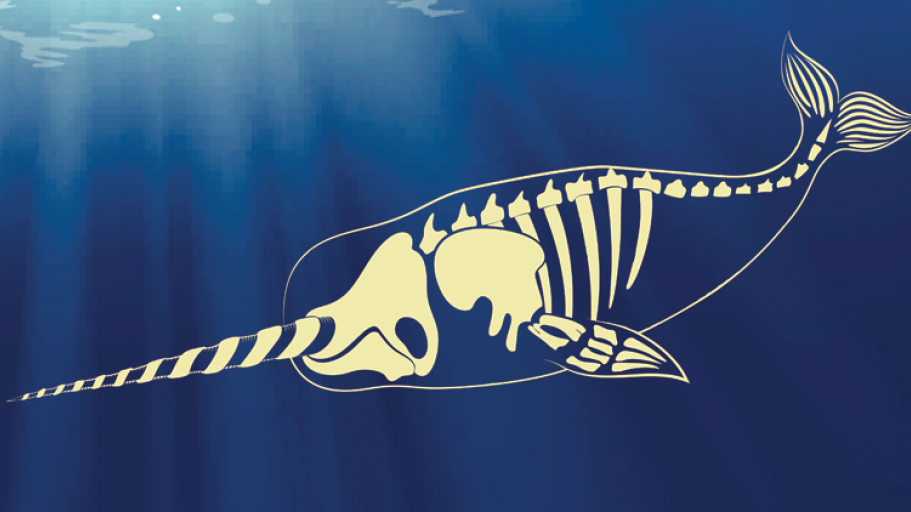
fter a week of non-stop, 20 hours a day work, we came back to Cambridge Bay for a few hours to deliver crewmember Yves Bernard to the airport and pick up his replacement, Clyde Bursey. Captain Gerry and crew fueled the ship and restocked supplies, including a replacement refrigerator for the galley’s aging workhorse. Clyde boarded at suppertime and we headed back out to the Finlayson Islands to sample the water column and seafloor through the night, before a mooring deployment and a mooring recovery scheduled for the morning.
While the crew transfers were taking place, the science party took advantage of the hours in town to tour Canada’s C3 (150th birthday celebration) vessel the M/V Polar Prince transiting northern North America from Toronto to Victoria, and then to visit the shipwreck of the legendary Maud, a Norwegian research ship that conducted extensive investigations of the Arctic nearly a century ago. The Maud shipwreck was raised from the seafloor over the past three years and placed atop a sea-going raft. Tomorrow she will head east to cross the North Atlantic; her final long voyage will take her back to Norway, where she was launched exactly 100 years ago this summer for explorer Roald Amundsen (incidentally, the first man, to sail the Northwest Passage).
Last summer, during the first year of our study, a team of Norwegian salvage experts raised the shipwreck of the vessel Maud from the seafloor here in Cambridge Bay. The Maud was launched in 1917 for an epic eight-year voyage led by Roald Amundsen. The Maud crossed the Northern Sea Route along the Siberian coast over 1918-1920, becoming alternately caught and released by the pack ice and conducting scientific studies all along the way. They spent 1921-1925 mostly in the Chukchi and East Siberian seas, with stops for repairs and refitting in Nome and Seattle. In 1923 they conducted the first scientific sampling through the sea ice from an airplane; the approach worked well for a short time, but the plane was wrecked in a crash-landing. They visited and learned from the Native Inuit along the Siberian and Chukotka peninsula coasts. Time and again they again took Maud north to become a floating laboratory locked in the midst of sea ice.

The Maud being towed out of Cambridge Bay, Nunavut. Photo by Seth Danielson.
Though Amundsen was a scientist in his own right, contributing to many advances in geophysics and oceanography, the Maud’s science leader was meteorologist and oceanographer Harald Sverdrup, who later developed fundamental theories about the circulation of the world’s oceans and the timing of algal production (ocean springtime). The Maud voyage resulted in 35 books, scientific journal articles and major contributions to other publications. To honor his contributions, a fundamental unit of oceanic transport is named after Sverdrup. One Sverdrup is defined as one million cubic meters of water per second.
As Maud left Cambridge Bay, Kristina Brown, Eddy Carmack, Shawn Marriott and I were arriving in the Martin Bergmann’s skiff. We drove up to the procession, waved back and forth to the tugboat Tandberg Polar’s crew and watched the historic wreck slide out to sea on pontoons. The whole setup was so close to the water and seemingly vulnerable to the large waves that they would be sure to encounter on the voyage to Norway. We wondered how this old shipwreck could ever make it across Davis Strait, the Labrador Sea, and all of the North Atlantic Ocean without further damage. But it appears that Maud now has another chapter to write and another opportunity to capture hearts and minds. I think about the lasting science that Maud contributed during her expedition of the 1920s and the then-cutting edge techniques that enabled Amundsen’s, Sverdrup’s and collaborator J.E. Fjeldstad’s oceanographic analyses and insights. Similarities in approach to our little high-tech expedition are clear; I can only hope that our study can contribute a small fraction of what Maud’s voyages revealed.





